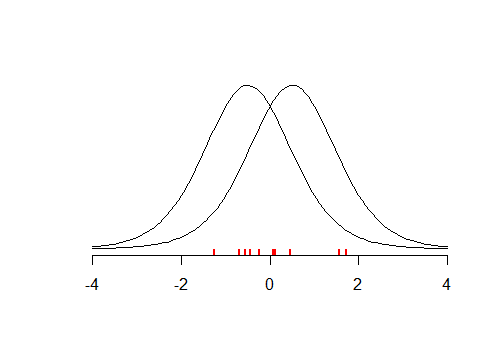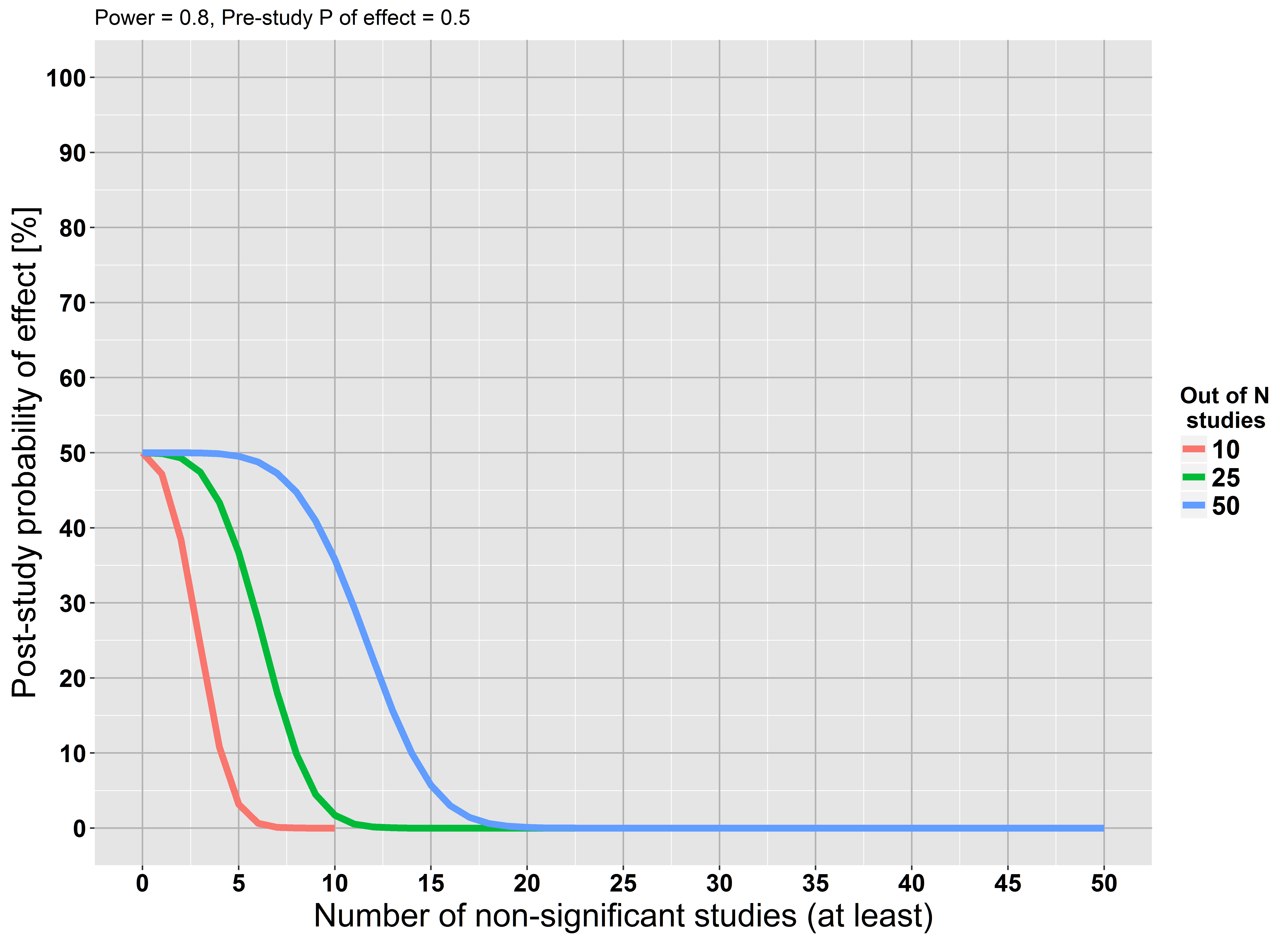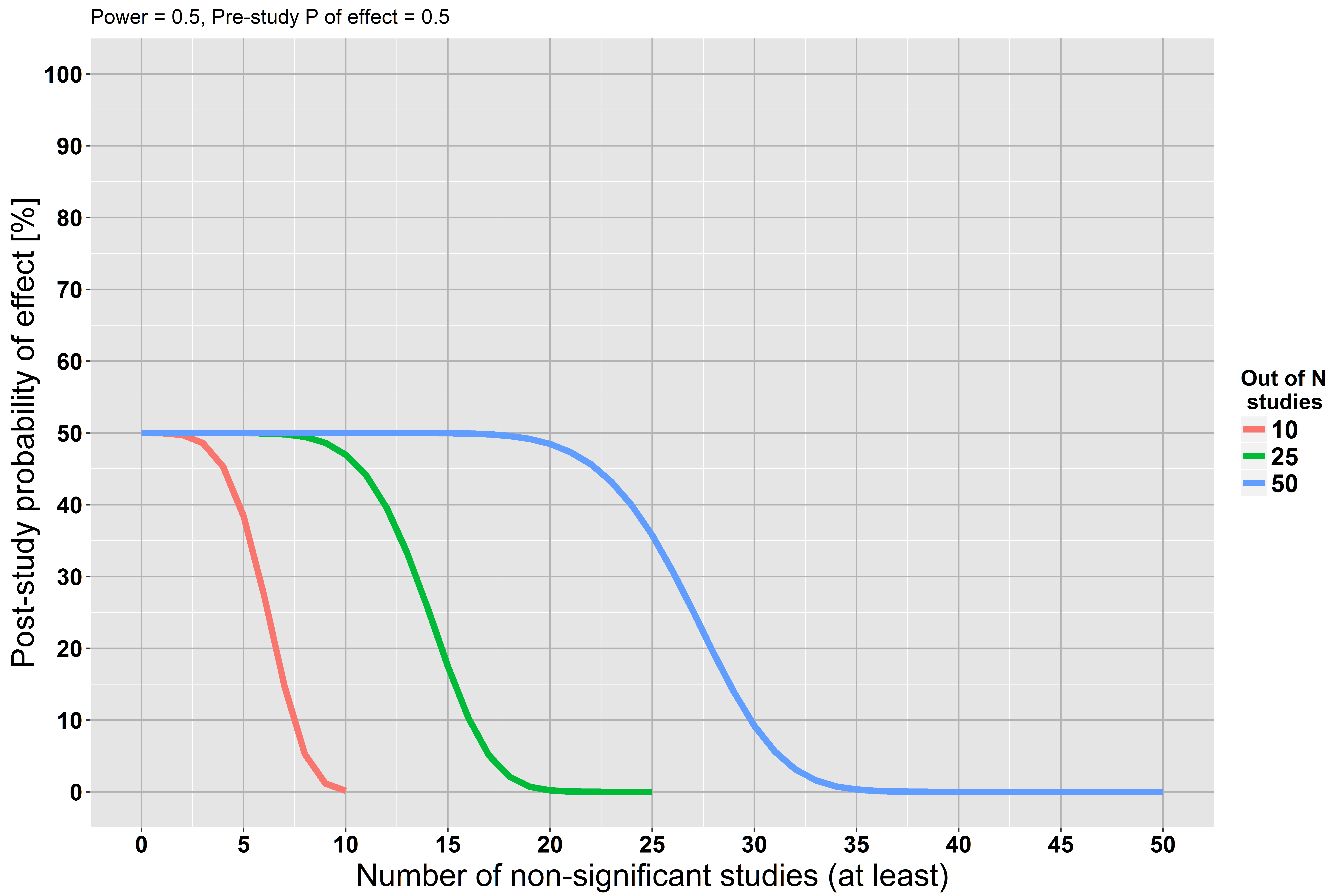Consider the small dataset (illustrated below) with mean $\bar x \approx 0$, say that you conducted a two-tailed $t$-test with $H_0: \bar x = \mu$, where $\mu = -0.5$. The test appears to be insignificant with $p > 0.05$. Does that signify that your $H_0$ is true? What if you tested against $\mu = 0.5$? Since the $t$ distribution is symmetric, the test would return a similar $p$-value. So you have approximately the same amount of evidence that $\mu = -0.5$ and that $\mu = 0.5$.

The above example shows that small $p$-values lead us away from believing in $H_0$ and that high $p$-values suggest that our data is somehow more consistent with $H_0$, as compared to $H_1$. If you conducted many such tests, then you could find such $\mu$ that is most likely given our data and in fact you would be using semi-maximum likelihood estimation. The idea of MLE is that you seek for such value of $\mu$ that maximizes the probability of observing your data given $\mu$, what leads to likelihood function
$$ L(\mu | X) = f(X | \mu) $$
MLE is a valid way of finding the point estimate for $\hat\mu$, but it tells you nothing about probability of observing $\hat\mu$ given your data. What you did is you picked a single value for $\hat\mu$ and asked about probability of observing your data given it. As already noticed by others, $f(\mu|X) \ne f(X|\mu)$. To find $f(\mu|X)$ we would need to account for the fact that we tested against different candidate values for $\hat\mu$. This leads to Bayes theorem
$$ f(\mu|X) = \frac{ f(X|\mu) \, f(\mu) }{ \int \, f(X|\mu) \, f(\mu) \, d\mu } $$
that first, considers how likely are different $\mu$'s a priori (this can be uniform, what leads to results consistent with MLE) and second, normalizes for the fact that you considered different candidates for $\hat\mu$. Moreover, if you ask about $\mu$ in probabilistic terms, you need to consider it as a random variable, so this is another reason for adopting Bayesian approach.
Concluding, hypothesis test tells you if $H_1$ is more likely then $H_0$, but since the procedure needed you to assume that $H_0$ is true and to pick a specific value for it. To give an analogy, imagine that your test is an oracle. If you ask her, "the ground is wet, is it possible that it was raining?", she'll answer: "yes, it is possible, in 83% of cases when it was raining, the ground become wet". If you ask her again, "is it possible that someone just spilled the water on the ground?", she'll answer "sure, it is also possible, in 100% of cases when someone spilled water on the ground, it become wet", etc. If you ask her for for some numbers, she will give them to you, but the numbers would not be comparable. The problem is that the hypothesis test/oracle operates in a framework, where she can give conclusive answers only for the questions asking if the data is consistent with some hypothesis, not the other way around, since you are not considering other hypotheses.



